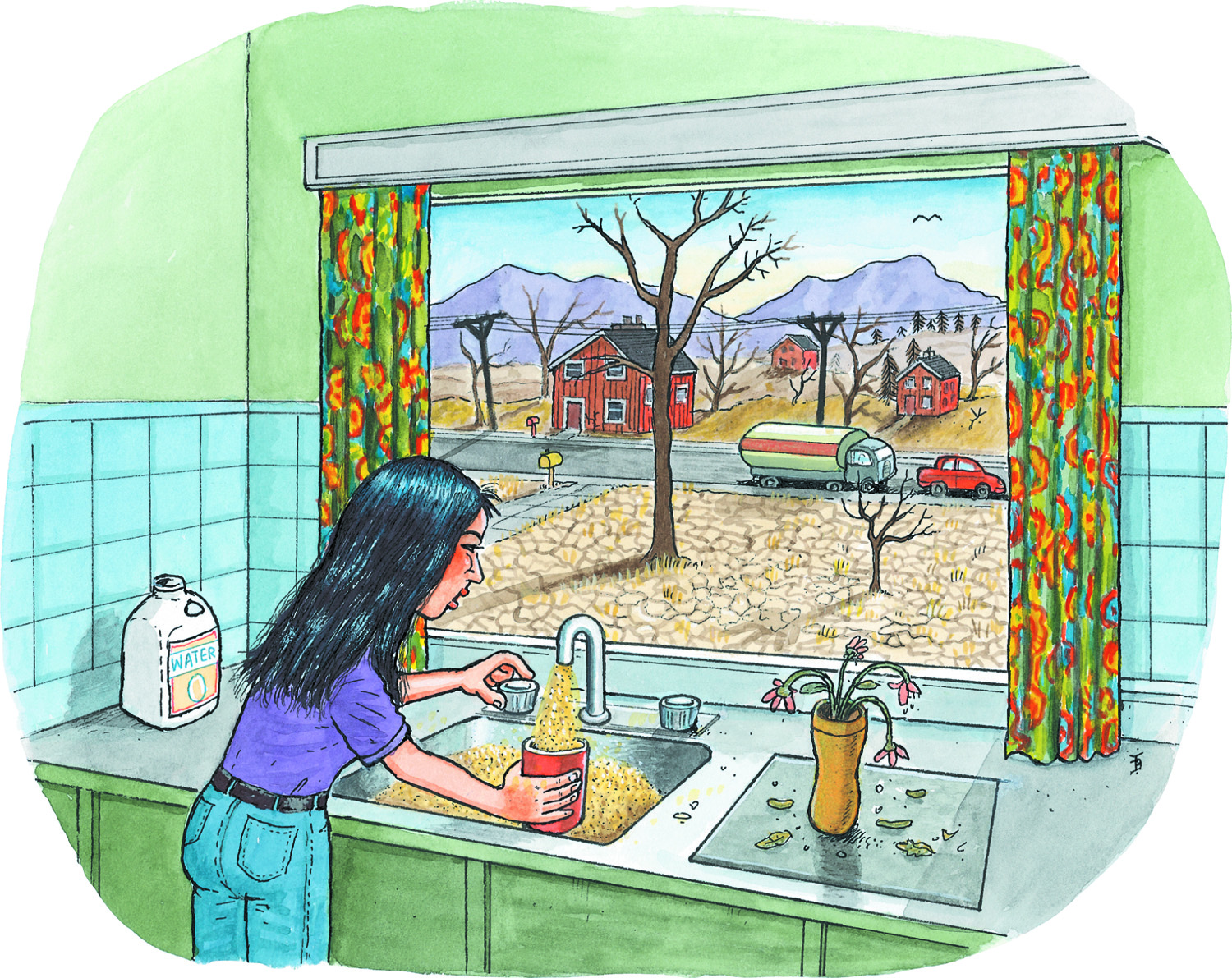
Overview
In this section you will find materials that support the implementation of EarthComm, Section 8: Water Supplies.
Learning Outcomes
- Use a model to explain how surface-water reservoirs respond to increases and decreases in precipitation and outflow.
- Use a model to explain the effect of increased supply and withdrawal on the flow of groundwater.
- Obtain and evaluate information from your community’s water quality report to understand the water-supply system in your community.
Investigate
For more information about the water supply in your community, visit the following web sites:
Safe Drinking Water Act, EPA
Click on "Find Your Local CCR" and your state to be taken to a new page that gives an overview of your state's drinking water and links to additional information. To view your water quality report, click on the "CCR Website" link to view a list of reports that are available online.
Inquiring Further
- To learn more about the first American reservoirs and groundwater systems, visit the following web site:
History of Colorado Water, The Water Information Program
Examines the history of the planning, construction and implementation of numerous water diversion and storage projects in the western United States.
- To learn more about the first American reservoirs and groundwater systems, visit the following web site:
History of Colorado Water, The Water Information Program
Examines the history of the planning, construction and implementation of numerous water diversion and storage projects in the western United States.
- To learn more about water supplies in desert cities, visit the following web sites:
Las Vegas, Neveda, Gambling with water in the desert, USGS
Looks at the history of water use and supply in Las Vegas, Nevada.
Active Management Area Water Supply, Arizona Department of Water Resources
Overview of the water supply system for the city of Phoenix, Arizona.
- To learn more about rainfall in countries around the world, visit the following web sites:
Precipitation: Country Rankings, The Global Economy
Provides precipitation data for locations throughout the world.
Worldclimate, Worldclimate.com
Examine climate data for locations throughout the world, including precipitation data.
Weatherbase, Weatherbase
Summarizes weather data for locations throughout the world.
Resources
To learn more about this topic, visit the following web sites:
Surface Water
Natural Processes of Groundwater and Surface water Interaction: The Hydrologic Cycle and Interactions of Ground Water and Surface Water, USGS
Reviews the basics of the water cycle, with a focus on the movement of water between and within ground and surface water reservoirs. Includes several full color illustrations.
Introduction to the Clean Water Act, EPA
Reviews the Clean Water Act and threats to the nation's surface water reservoirs. Also includes a FAQ section with advice on finding more information.
Groundwater
Hydrogeology, EPA
Introduces concepts of hydrogeology, which involves the study of water below the Earth's surface. Click on links to find more information and images on what groundwater is, what an aquifer is, how water moves underground, and more.
The Basics, Groundwater Foundation
Provides information and images to review groundwater as a resource, pollution threats to groundwater, and steps that can be taken to protect groundwater supplies.
Ground Water Atlas of the United States, USGS
Click on your region of the map to open a new window that will contain links to a summary of groundwater in the area and information about each of the primary aquifers in that region.
Desalination
Thirsty? How 'bout a cool, refreshing cup of seawater?, USGS
Reviews the basics of the desalination process and how desalination can be used as a water resource.
Why Don't We Get Our Drinking Water from the Ocean?, Scientific American
Looks at the costs and energy demands of desalination processes.
Natural Fluctuations in Water Resources
Natural Processes of Groundwater and Surface water Interaction: The Hydrologic Cycle and Interactions of Ground Water and Surface Water, USGS
Reviews the basics of the water cycle, with a focus on the movement of water between and within ground and surface water reservoirs.
Challenges and Opportunities, USGS
Discusses the issues related to water management and policy, including water supply, water quality, and characteristics of aquatic environments.
Water on Tap: What You Need to Know, EPA
Provides information on a variety of topics related to drinking water, including the quality of drinking water in the U.S., where water comes from, how much drinking water is used in the typical home, the future of water resources in the U.S., and steps that can be taken to protect the nation's drinking water.
Water-Managing a National Resource, USGS
Reviews steps the USGS takes to be efficient in managing the nation's water supply.
